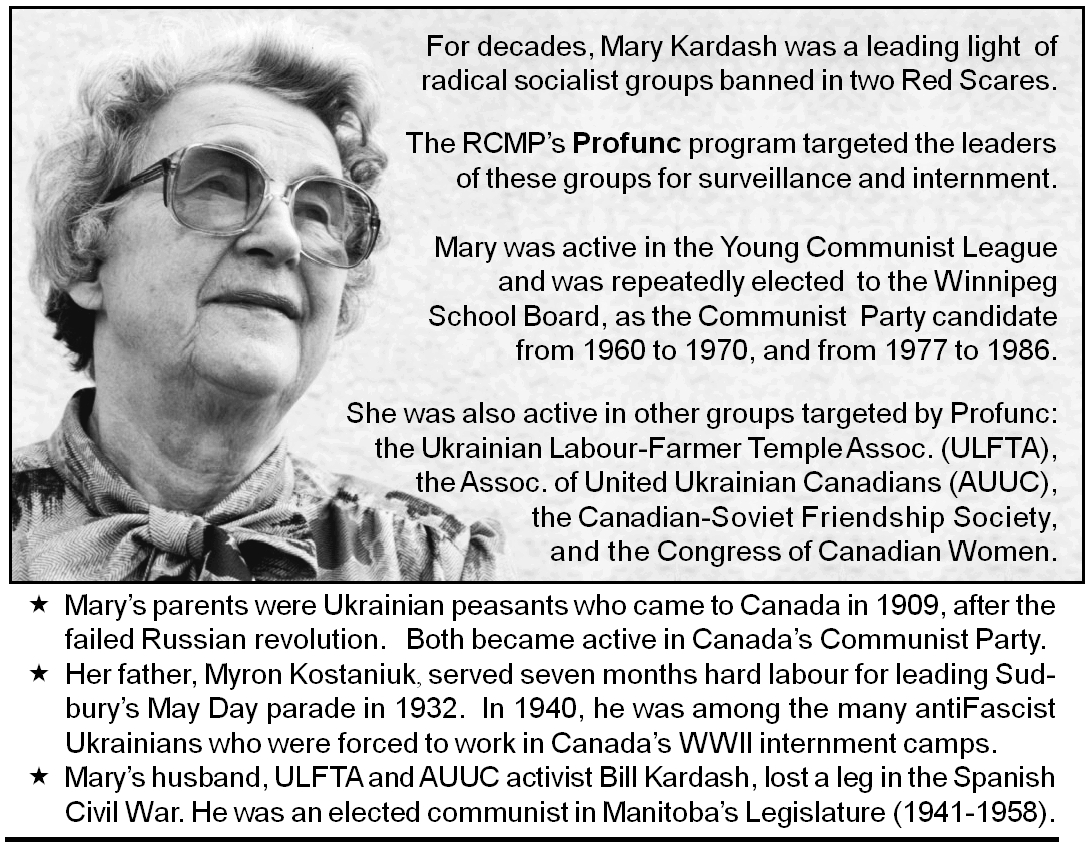
US
Attorney General Bill Barr attends a roundtable meeting on seniors with
US President Donald Trump in the Cabinet Room at the White House in
Washington, DC, June 15, 2020. - President Donald Trump holds a
roundtable discussion with senior citizens called Fighting for Americas
Seniors on Monday. (Photo by SAUL LOEB / AFP) (Photo by SAUL LOEB/AFP
via Getty Images)
Bill Barr and the Ghost of Fascism
Lawlessness in Trump’s Fascist State
Joan Walsh writing in The Nation rightly states that “Barr’s
decline into blatant but ineffectual lawlessness is proof that Trumpism
is a degenerative disease.” To prove her point, she writes:
On Barr’s order “National Guard soldiers and police proceeded to club peaceful protesters with batons and fire tear gas canisters into crowds as Trump delivered a speech on the nationwide uprising sparked by the killing of George Floyd.”[6] One pastor, Michael Wilker, one of the leaders of the Washington Interfaith Network called Trump’s actions an “abomination,” placing Trump’s actions in the context of an earlier fascist history. According to Wilker,
During Nazi Germany, Adolf Hitler used the symbols of the Lutheran church—our own church—as a way to divide Christians from one another, and especially to deny the humanity of Jews in Germany. It’s the same thing Trump is doing here: he is using the symbols of the church as a way to divide the church from one another and to divert our attention from the actual suffering and killing that’s going on.[It was] a demonic act.[7]
Wilker’s comments indict both Trump, Barr, and the other ignominious luminaries that stood with Trump in front of St. John’s church. In addition, Barr’s support for Trump’s silly Bible photo op cannot be separated from the speech Trump gave in the Rose Garden before the police and National Guard attacked the peaceful protesters. In that speech, Trump appointed himself as the “president of law and order” and came close to declaring war on the American people. As Kristen Clarke put it on Democracy Now:
In light of such actions and the refusal of the Republican members of Congress to speak out against such activities, it is not surprising for conservative journalist George Will to declare that Barr and Trump’s congressional enablers “gambol around [Trump’s] ankles with a canine hunger for petting.”[10] This criticism is not unfounded given Barr’s legal and ideological cover for Trump’s dangerous lackeys, such as Senate Majority Leader Mitch McConnell and Senator Lindsay Graham, both of whom shamed themselves again during the impeachment hearings. For example, McConnell’s Vichyite propensity for collaboration with the White House was on full display when he publicly denounced the impeachment process and as an unabashed defender of Trump stated that he would work hand in hand with the Trump administration on the impeachment process to make sure Trump would not be removed from office.
In addition, Senator Lindsay Graham stated that he had already made up his mind about Trump committing a criminal conspiracy, which he dismissed, and that he would do everything he could to make impeachment “die quickly” in the Senate.[11] As was well noted in the mainstream press, Republican senators decided not to hear evidence, never took seriously the charge of impeachment, and in doing so shamed themselves by refusing to “use the opportunity to rid the country of a president whose operative value system—built around corruption, nascent authoritarianism, self-regard, and his family’s business interests—runs counter to everything that most of them claim to believe in.”[12] Such blind and dangerous support for Trump the vulgarian warrants Will’s claim that Trump is a “malignant buffoon” and that those who support him should be removed from office.[13]
There appears to be no limits to Barr’s defense of the indefensible, particularly as a way of placating Trump’s vindictive and vengeful actions towards those he believes have wronged him or his close associates. In June of 2020, Barr convinced Trump to fire, Geoffrey S. Berman, the United States attorney in Manhattan. Berman had pursued a number of cases on members of Trump’s inner circle that irked Trump. The latter include the arrest and prosecution in 2018 of Michael D. Cohen, Trump’s longtime lawyer and fixer, an investigation into the wrongdoings of a Turkish state-owned bank (an investigation Trump had promised Turkish president, Recep Tayyip Erdogan, he would end), and more recently Berman’s office had started an inquiry into Rudolph W. Giuliani, Trump’s close supporter and personal lawyer. Speaking on CNN, Rep. Adam Schiff (D-CA), Chairman of the House Permanent Select Committee on Intelligence, stated that Barr “is the second most dangerous man in the country.”[14]
Since Trump’s impeachment, he has fired 6 inspector generals, weakening the power of the federal government’s internal watch dogs to conduct oversight of their various agencies. Not by coincidence, Steve Linick, an inspector general at the State Department was investigating Mike Pompeo. Barr’s use of the Department of Justice as a tool to implement the president’s personal and political demands was on full display when a justice department official recounted to Congress that Barr had intervened in a sentencing recommendation “because of politics.” Aaron S. J. Zelinsky, a prosecutor, stated that Bar overrode the decisions of career prosecutors to “seek a more lenient prison sentence for Mr. Trump’s longtime friend Roger J. Stone Jr.”[15] This is not merely about corruption and incompetence, but lawlessness, which is the essence of fascist politics. As Hannah Arendt noted in her work on totalitarianism: “If lawfulness is the essence of non-tyrannical government and lawlessness is the essence of tyranny, then terror is the essence of totalitarian.”[16]
Some influential commentators such as Cass Sunstein have argued that America’s system of checks and balances protects the US against the threat of a full-blown authoritarianism. Bill Barr has made it clear that the law is just as susceptible to the reactionary forces of political power as is any other institution and can succumb to the depths of depravity and even worse. A criminal state is not contained by the law; in fact, it corrupts it as has been made clear by the rebellions taking place across the globe in the aftermath of the murder of George Floyd by police who believe they are above any just notion of the law. Trump and Barr are apostles of white supremacy, avatars of racial cleansing, and their lawlessness is a testimony to their belief in a politics of disposability. Nazi Germany proved with frightening clarity that the rule of law and its institutions can be easily transformed and implemented into agents of state violence, if not domestic terrorism. What Trump and Barr have proven with utmost audacity and little regret is that no institution is immune from the reach and power of a fascist politics. As William Robinson points out, one of the first elements of a fascist politics is the emergence of the state as a reactionary and repressive political power. In addition, the state is reconfigured to meet the needs of the financial and corporate elite, and on the cultural front the emergence and mobilization of fascist wannabe groups such as nativist movements, neo-Nazis, right-wing militia groups, and corporate controlled right-wing media apparatus.[17] Trump and Barr support all of these elements, and wear their commitment to lawlessness and state violence like a badge. The thousands marching in the streets and the Black Lives Matter movement have forcefully maintained that lawlessness is not about the transgressions of a few bad cops, however egregious, or a few corrupt politicians such as Trump and Barr, or even a Republican Party dominated by white supremacists and Vichy apologists. They have made it clear that the struggle is about dismantling a system that has made violence its organizing principle and echoes a past in which horrors of that past must not be either normalized nor repeated.
Notes.
1 Adorno, Theodor W., “The Meaning of Working Through the Past,” Guild and Defense, trans. Henry W. Pickford, (Cambridge: Harvard University Press, 2010), p. 213. ↑
2 Tamsin Shaw, “William Barr: The Carl Schmitt of Our Time,” New York Review of Books (January 15, 2020). Online: https://www.nybooks.com/daily/2020/01/15/william-barr-the-carl-schmitt-of-our-time/?utm_medium=email&utm_campaign=NYR%20Daily%20Tamsin%20Shaw&utm_content=NYR%20Daily%20Tamsin%20Shaw+CID_fab36e70a506d2d42e8747691ecb4ebd&utm_source=Newsletter&utm_term=William%20Barr%20The%20Carl%20Schmitt%20of%20Our%20Time ↑
3 Eric H. Holder, “William Barr is unfit to be attorney general,” Washington Post (December 11, 2019). Online: https://www.washingtonpost.com/opinions/eric-holder-william-barr-is-unfit-to-be-attorney-general/2019/12/11/99882092-1c55-11ea-87f7-f2e91143c60d_story.html ↑
4 James Risen, “William Barr Has Turned the Justice Department Into a Law Firm With One Client: Donald Trump,” The Intercept (June 22, 2020). Online: https://theintercept.com/2020/06/22/william-barr-has-turned-the-justice-department-into-a-law-firm-with-one-client-donald-trump/?utm_medium=email&utm_source=The%20Intercept%20Newsletter ↑
5 Joan Walsh, “As Bill Barr Flails, Trump Is Losing His Roy Cohn,” The Nation (June 22, 2020). Online: https://www.thenation.com/article/politics/william-barr-berman-trump/ ↑
6 Jake Johnson, “’He Must Resign’: Attorney General Barr Personally Ordered Police Assault on Peaceful DC Protesters, Report Says,” Common Dreams (June 2, 2020). Online: https://www.commondreams.org/news/2020/06/02/he-must-resign-attorney-general-barr-personally-ordered-police-assault-peaceful-dc ↑
7 Cited in Susan B. Glasser, “#BunkerBoy’s Photo-Op War,” The New Yorker (June 3, 2020). Online: https://www.newyorker.com/news/letter-from-trumps-washington/bunkerboys-photo-op-war ↑
8 Amy Goodman, “‘A Declaration of War Against Americans’: Trump Threatens to Deploy Military to Quell Protests,” Democracy Now (June 2, 2020). Online: https://www.democracynow.org/2020/6/2/trump_insurrection_act_military_against_protests ↑
9 Katie Benner, “Barr Says There Is No Systemic Racism in Policing,” New York Times (June 7, 2020). Online: https://www.nytimes.com/2020/06/07/us/politics/justice-department-barr-racism-police.html ↑
10 George Will, “Trump must be removed. So must his congressional enablers,” The Washington Post (June 1, 2020). Online: https://www.washingtonpost.com/opinions/no-one-should-want-four-more-years-of-this-taste-of-ashes/2020/06/01/1a80ecf4-a425-11ea-bb20-ebf0921f3bbd_story.html ↑
11 Peter Wade, “Trump Sycophant Lindsey Graham: ‘I Will Do Everything I Can to Make Impeachment Die Quickly’ in the Senate,” Rolling Stone (December 14, 2019). Online: https://www.rollingstone.com/politics/politics-news/trump-sycophant-lindsey-graham-i-will-do-everything-i-can-to-make-impeachment-die-quickly-927279/ ↑
12 Anne Applebaum, “History Will Judge the Complicit: Why have Republican leaders abandoned their principles in support of an immoral and dangerous president?,” The Atlantic (July/August 2020). Online: https://www.theatlantic.com/magazine/archive/2020/07/trumps-collaborators/612250/ ↑
13 Ibid. ↑
14 Rachel Frazin, “Schiff calls Barr ‘the second-most dangerous man in the country’,” The Hill (June 25, 2020). Online: https://thehill.com/homenews/house/446895-schiff-calls-barr-is-the-the-2nd-most-dangerous-man-in-the-country ↑
15 Nicholas Fandos, “Justice Dept. Officials Outline Claims of Politicization Under Barr,” New York Times (June 24, 2020). Online: https://www.nytimes.com/2020/06/24/us/politics/justice-department-politicization.html ↑
16 Hannah Arendt, The Origins of Totalitarianism (New York: Harvest Book, 1973), p. 464. ↑
17 William Robinson, “How Capitalism’s Structural and Ideological Crisis Gives Rise to Neo-Fascism,” The Real News, [February 5, 2020]. Online https://therealnews.com/stories/capitalism-structural-ideological-crisis-neo-fascism ↑
…as Barr has gotten more brazen in his attempts to subvert the law, he’s gotten sloppier. His four-page memo of lies about the Mueller report last year fooled too much of the media, at least temporarily. There’s been more skepticism about his shocking interventions to reduce his department’s own sentencing request for Roger Stone, and to drop perjury charges against former national security adviser Michael Flynn (though Flynn admitted the crime). Both moves resulted in career attorneys resigning and widespread criticism from the legal establishment and the media.[5]Shamelessly, Barr issued a directive to National Guard soldiers and police to attack individuals peacefully protesting the police killing of George Floyd in Lafayette Square in order to clear a path for Trump’s walk to St. John’s Episcopal Church for a photo op. In the photo op, Trump stood before the church awkwardly holding a bible in his hand, echoing a history one associates with the Ku Klux Klan and iconographic images right out of D. W. Griffith’s 1915 racist film, The Birth of a Nation.
On Barr’s order “National Guard soldiers and police proceeded to club peaceful protesters with batons and fire tear gas canisters into crowds as Trump delivered a speech on the nationwide uprising sparked by the killing of George Floyd.”[6] One pastor, Michael Wilker, one of the leaders of the Washington Interfaith Network called Trump’s actions an “abomination,” placing Trump’s actions in the context of an earlier fascist history. According to Wilker,
During Nazi Germany, Adolf Hitler used the symbols of the Lutheran church—our own church—as a way to divide Christians from one another, and especially to deny the humanity of Jews in Germany. It’s the same thing Trump is doing here: he is using the symbols of the church as a way to divide the church from one another and to divert our attention from the actual suffering and killing that’s going on.[It was] a demonic act.[7]
Wilker’s comments indict both Trump, Barr, and the other ignominious luminaries that stood with Trump in front of St. John’s church. In addition, Barr’s support for Trump’s silly Bible photo op cannot be separated from the speech Trump gave in the Rose Garden before the police and National Guard attacked the peaceful protesters. In that speech, Trump appointed himself as the “president of law and order” and came close to declaring war on the American people. As Kristen Clarke put it on Democracy Now:
Here, Trump single-handedly seeks to deploy the military to states all across our country over the objections of state officials and with the sole and singular purpose of silencing Americans. In many ways, this is the death of democracy, because people who are out right now have one singular goal: to ensure that at this moment we not turn our backs on the long-overdue work that’s necessary to rid our nation of the scourge of police violence that has resulted in innumerous deaths of unarmed African Americans.[8]In spite of the overwhelming evidence of a police culture in the US rooted in racism, Barr has stated publicly that “he did not believe racism was a systemic problem in policing, echoing other top administration officials’ defense of an important part of President Trump’s base as protests against police killings of unarmed black people continued across the nation.”[9] Barr along with Trump’s acolytes are not simply the victims of bad judgment, they lack a moral compass, embrace the banner of white supremacy, willingly support what appears to be racial anxieties about the decline of “white civilization,” and have emerged as a menace to the American people and to democracy itself. A strong believer in an imperial presidency, Barr has relinquished the role of the justice department as an independent agency and has repeatedly attempted to subvert the law he should be upholding.
In light of such actions and the refusal of the Republican members of Congress to speak out against such activities, it is not surprising for conservative journalist George Will to declare that Barr and Trump’s congressional enablers “gambol around [Trump’s] ankles with a canine hunger for petting.”[10] This criticism is not unfounded given Barr’s legal and ideological cover for Trump’s dangerous lackeys, such as Senate Majority Leader Mitch McConnell and Senator Lindsay Graham, both of whom shamed themselves again during the impeachment hearings. For example, McConnell’s Vichyite propensity for collaboration with the White House was on full display when he publicly denounced the impeachment process and as an unabashed defender of Trump stated that he would work hand in hand with the Trump administration on the impeachment process to make sure Trump would not be removed from office.
In addition, Senator Lindsay Graham stated that he had already made up his mind about Trump committing a criminal conspiracy, which he dismissed, and that he would do everything he could to make impeachment “die quickly” in the Senate.[11] As was well noted in the mainstream press, Republican senators decided not to hear evidence, never took seriously the charge of impeachment, and in doing so shamed themselves by refusing to “use the opportunity to rid the country of a president whose operative value system—built around corruption, nascent authoritarianism, self-regard, and his family’s business interests—runs counter to everything that most of them claim to believe in.”[12] Such blind and dangerous support for Trump the vulgarian warrants Will’s claim that Trump is a “malignant buffoon” and that those who support him should be removed from office.[13]
There appears to be no limits to Barr’s defense of the indefensible, particularly as a way of placating Trump’s vindictive and vengeful actions towards those he believes have wronged him or his close associates. In June of 2020, Barr convinced Trump to fire, Geoffrey S. Berman, the United States attorney in Manhattan. Berman had pursued a number of cases on members of Trump’s inner circle that irked Trump. The latter include the arrest and prosecution in 2018 of Michael D. Cohen, Trump’s longtime lawyer and fixer, an investigation into the wrongdoings of a Turkish state-owned bank (an investigation Trump had promised Turkish president, Recep Tayyip Erdogan, he would end), and more recently Berman’s office had started an inquiry into Rudolph W. Giuliani, Trump’s close supporter and personal lawyer. Speaking on CNN, Rep. Adam Schiff (D-CA), Chairman of the House Permanent Select Committee on Intelligence, stated that Barr “is the second most dangerous man in the country.”[14]
Since Trump’s impeachment, he has fired 6 inspector generals, weakening the power of the federal government’s internal watch dogs to conduct oversight of their various agencies. Not by coincidence, Steve Linick, an inspector general at the State Department was investigating Mike Pompeo. Barr’s use of the Department of Justice as a tool to implement the president’s personal and political demands was on full display when a justice department official recounted to Congress that Barr had intervened in a sentencing recommendation “because of politics.” Aaron S. J. Zelinsky, a prosecutor, stated that Bar overrode the decisions of career prosecutors to “seek a more lenient prison sentence for Mr. Trump’s longtime friend Roger J. Stone Jr.”[15] This is not merely about corruption and incompetence, but lawlessness, which is the essence of fascist politics. As Hannah Arendt noted in her work on totalitarianism: “If lawfulness is the essence of non-tyrannical government and lawlessness is the essence of tyranny, then terror is the essence of totalitarian.”[16]
Some influential commentators such as Cass Sunstein have argued that America’s system of checks and balances protects the US against the threat of a full-blown authoritarianism. Bill Barr has made it clear that the law is just as susceptible to the reactionary forces of political power as is any other institution and can succumb to the depths of depravity and even worse. A criminal state is not contained by the law; in fact, it corrupts it as has been made clear by the rebellions taking place across the globe in the aftermath of the murder of George Floyd by police who believe they are above any just notion of the law. Trump and Barr are apostles of white supremacy, avatars of racial cleansing, and their lawlessness is a testimony to their belief in a politics of disposability. Nazi Germany proved with frightening clarity that the rule of law and its institutions can be easily transformed and implemented into agents of state violence, if not domestic terrorism. What Trump and Barr have proven with utmost audacity and little regret is that no institution is immune from the reach and power of a fascist politics. As William Robinson points out, one of the first elements of a fascist politics is the emergence of the state as a reactionary and repressive political power. In addition, the state is reconfigured to meet the needs of the financial and corporate elite, and on the cultural front the emergence and mobilization of fascist wannabe groups such as nativist movements, neo-Nazis, right-wing militia groups, and corporate controlled right-wing media apparatus.[17] Trump and Barr support all of these elements, and wear their commitment to lawlessness and state violence like a badge. The thousands marching in the streets and the Black Lives Matter movement have forcefully maintained that lawlessness is not about the transgressions of a few bad cops, however egregious, or a few corrupt politicians such as Trump and Barr, or even a Republican Party dominated by white supremacists and Vichy apologists. They have made it clear that the struggle is about dismantling a system that has made violence its organizing principle and echoes a past in which horrors of that past must not be either normalized nor repeated.
Notes.
1 Adorno, Theodor W., “The Meaning of Working Through the Past,” Guild and Defense, trans. Henry W. Pickford, (Cambridge: Harvard University Press, 2010), p. 213. ↑
2 Tamsin Shaw, “William Barr: The Carl Schmitt of Our Time,” New York Review of Books (January 15, 2020). Online: https://www.nybooks.com/daily/2020/01/15/william-barr-the-carl-schmitt-of-our-time/?utm_medium=email&utm_campaign=NYR%20Daily%20Tamsin%20Shaw&utm_content=NYR%20Daily%20Tamsin%20Shaw+CID_fab36e70a506d2d42e8747691ecb4ebd&utm_source=Newsletter&utm_term=William%20Barr%20The%20Carl%20Schmitt%20of%20Our%20Time ↑
3 Eric H. Holder, “William Barr is unfit to be attorney general,” Washington Post (December 11, 2019). Online: https://www.washingtonpost.com/opinions/eric-holder-william-barr-is-unfit-to-be-attorney-general/2019/12/11/99882092-1c55-11ea-87f7-f2e91143c60d_story.html ↑
4 James Risen, “William Barr Has Turned the Justice Department Into a Law Firm With One Client: Donald Trump,” The Intercept (June 22, 2020). Online: https://theintercept.com/2020/06/22/william-barr-has-turned-the-justice-department-into-a-law-firm-with-one-client-donald-trump/?utm_medium=email&utm_source=The%20Intercept%20Newsletter ↑
5 Joan Walsh, “As Bill Barr Flails, Trump Is Losing His Roy Cohn,” The Nation (June 22, 2020). Online: https://www.thenation.com/article/politics/william-barr-berman-trump/ ↑
6 Jake Johnson, “’He Must Resign’: Attorney General Barr Personally Ordered Police Assault on Peaceful DC Protesters, Report Says,” Common Dreams (June 2, 2020). Online: https://www.commondreams.org/news/2020/06/02/he-must-resign-attorney-general-barr-personally-ordered-police-assault-peaceful-dc ↑
7 Cited in Susan B. Glasser, “#BunkerBoy’s Photo-Op War,” The New Yorker (June 3, 2020). Online: https://www.newyorker.com/news/letter-from-trumps-washington/bunkerboys-photo-op-war ↑
8 Amy Goodman, “‘A Declaration of War Against Americans’: Trump Threatens to Deploy Military to Quell Protests,” Democracy Now (June 2, 2020). Online: https://www.democracynow.org/2020/6/2/trump_insurrection_act_military_against_protests ↑
9 Katie Benner, “Barr Says There Is No Systemic Racism in Policing,” New York Times (June 7, 2020). Online: https://www.nytimes.com/2020/06/07/us/politics/justice-department-barr-racism-police.html ↑
10 George Will, “Trump must be removed. So must his congressional enablers,” The Washington Post (June 1, 2020). Online: https://www.washingtonpost.com/opinions/no-one-should-want-four-more-years-of-this-taste-of-ashes/2020/06/01/1a80ecf4-a425-11ea-bb20-ebf0921f3bbd_story.html ↑
11 Peter Wade, “Trump Sycophant Lindsey Graham: ‘I Will Do Everything I Can to Make Impeachment Die Quickly’ in the Senate,” Rolling Stone (December 14, 2019). Online: https://www.rollingstone.com/politics/politics-news/trump-sycophant-lindsey-graham-i-will-do-everything-i-can-to-make-impeachment-die-quickly-927279/ ↑
12 Anne Applebaum, “History Will Judge the Complicit: Why have Republican leaders abandoned their principles in support of an immoral and dangerous president?,” The Atlantic (July/August 2020). Online: https://www.theatlantic.com/magazine/archive/2020/07/trumps-collaborators/612250/ ↑
13 Ibid. ↑
14 Rachel Frazin, “Schiff calls Barr ‘the second-most dangerous man in the country’,” The Hill (June 25, 2020). Online: https://thehill.com/homenews/house/446895-schiff-calls-barr-is-the-the-2nd-most-dangerous-man-in-the-country ↑
15 Nicholas Fandos, “Justice Dept. Officials Outline Claims of Politicization Under Barr,” New York Times (June 24, 2020). Online: https://www.nytimes.com/2020/06/24/us/politics/justice-department-politicization.html ↑
16 Hannah Arendt, The Origins of Totalitarianism (New York: Harvest Book, 1973), p. 464. ↑
17 William Robinson, “How Capitalism’s Structural and Ideological Crisis Gives Rise to Neo-Fascism,” The Real News, [February 5, 2020]. Online https://therealnews.com/stories/capitalism-structural-ideological-crisis-neo-fascism ↑


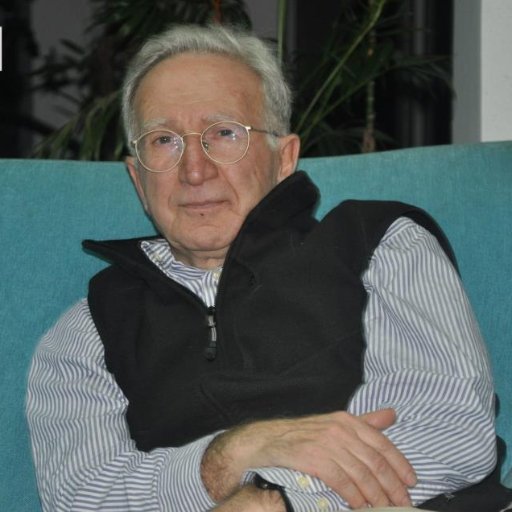
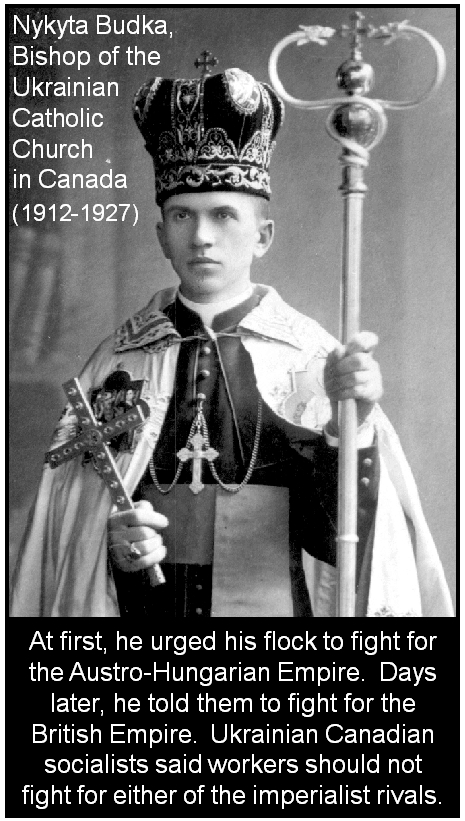
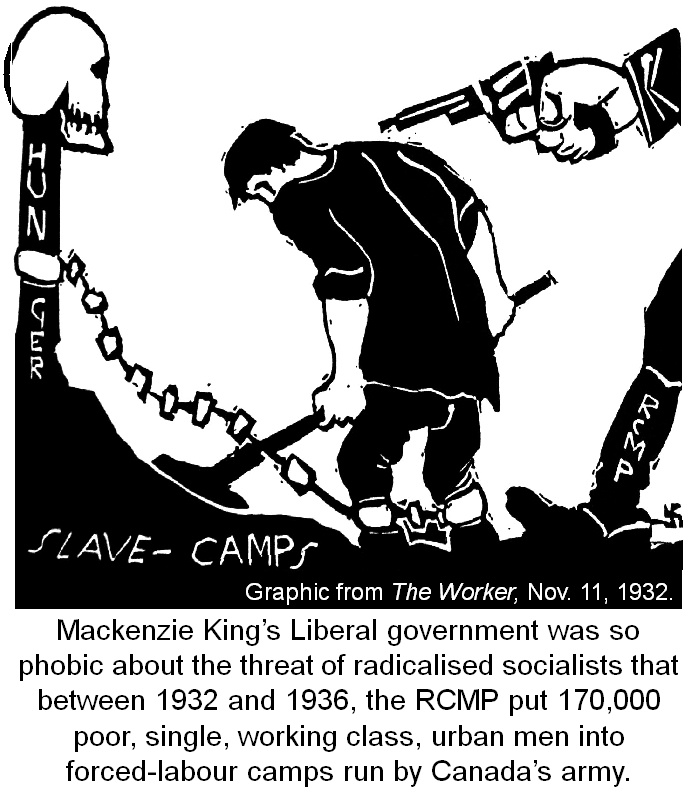 The Dirty Thirties:
The Dirty Thirties: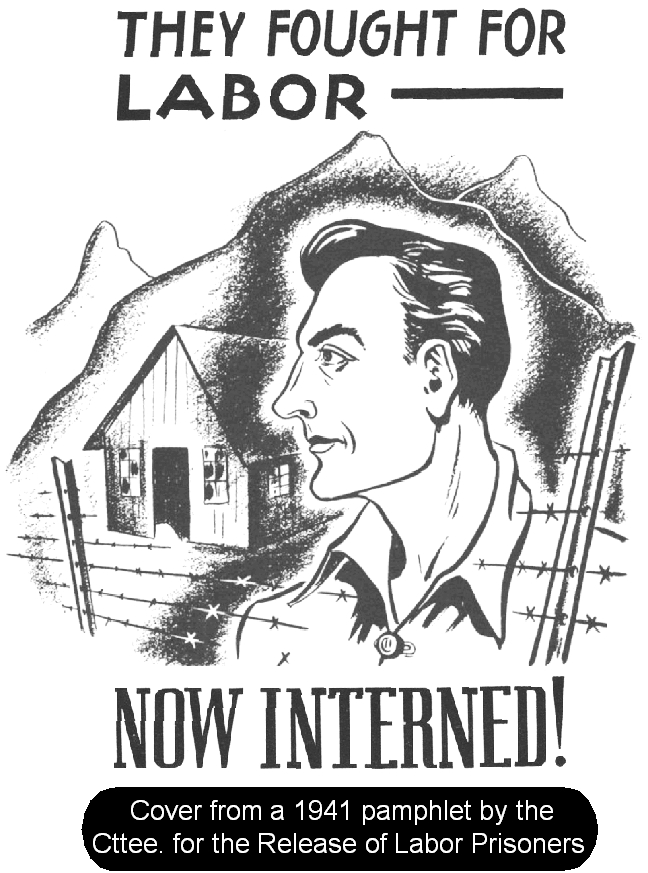 World War II:
World War II: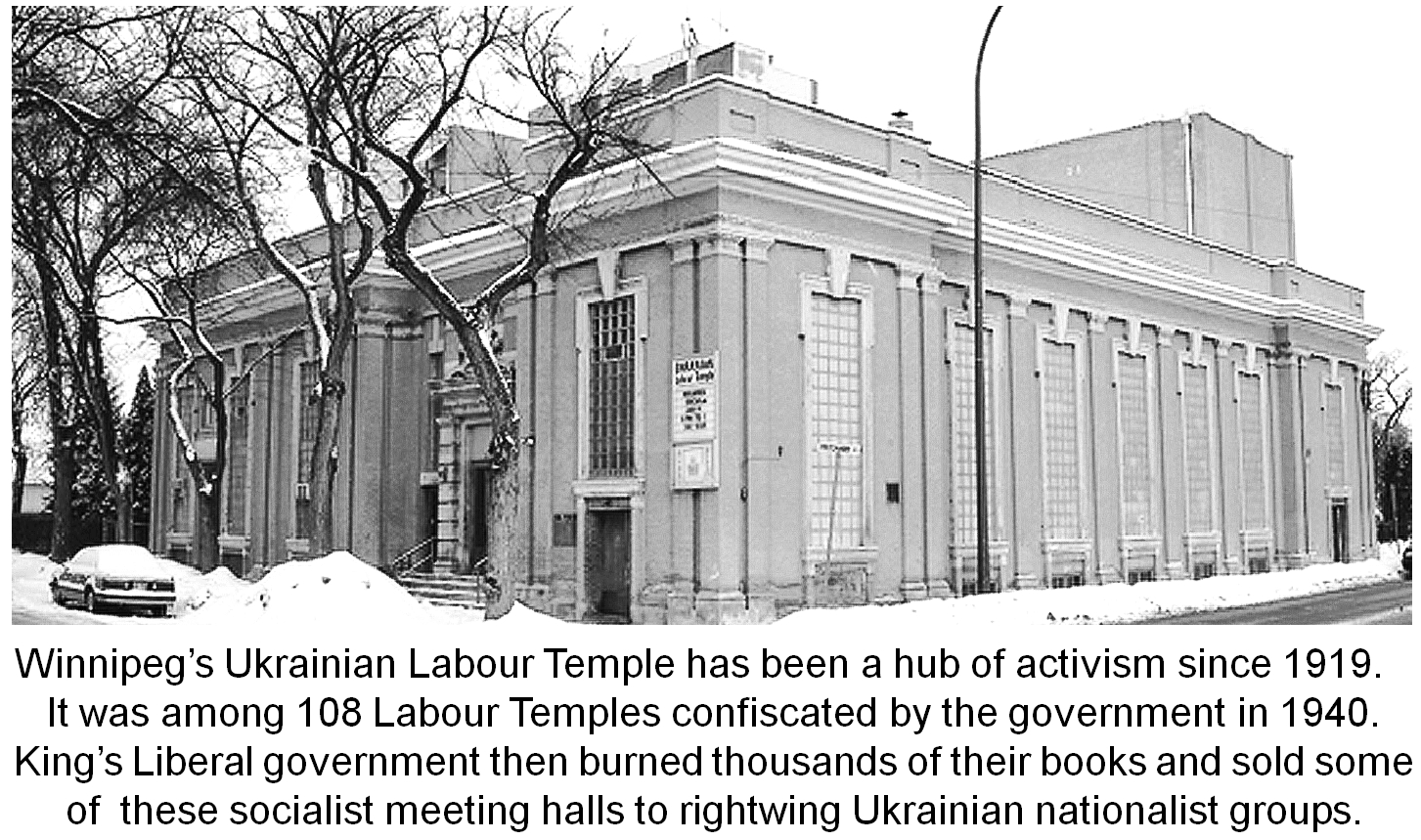 In
1943, the Civil Liberties Association of Toronto campaigned for the
return of 108 ULFTA halls that were seized in 1940.72 However, an
outspoken voice for the Ukrainian Right, Lubomyr Luciuk—a political
science professor at Canada’s Royal Military College—falsely claimed
that only 16 Labour Temples were seized. In reality, “[s]ixteen of the
Labour Temples were sold at prices that were up to 85% less than the
assessed property values,”73 said Suzanne Hunchuck. Luciuk did
correctly note that some ULFTA halls were “sold to rival Ukrainian
Canadian organisations, mainly local branches of the UNF or Ukrainian
Catholic and Ukrainian Orthodox parishes.”74 For example, ULFTA’s
Winnipeg, Montreal and Edmonton Labour Temples were all “sold,” at
fire-sale prices, to Canada’s proNazi UNF.
In
1943, the Civil Liberties Association of Toronto campaigned for the
return of 108 ULFTA halls that were seized in 1940.72 However, an
outspoken voice for the Ukrainian Right, Lubomyr Luciuk—a political
science professor at Canada’s Royal Military College—falsely claimed
that only 16 Labour Temples were seized. In reality, “[s]ixteen of the
Labour Temples were sold at prices that were up to 85% less than the
assessed property values,”73 said Suzanne Hunchuck. Luciuk did
correctly note that some ULFTA halls were “sold to rival Ukrainian
Canadian organisations, mainly local branches of the UNF or Ukrainian
Catholic and Ukrainian Orthodox parishes.”74 For example, ULFTA’s
Winnipeg, Montreal and Edmonton Labour Temples were all “sold,” at
fire-sale prices, to Canada’s proNazi UNF.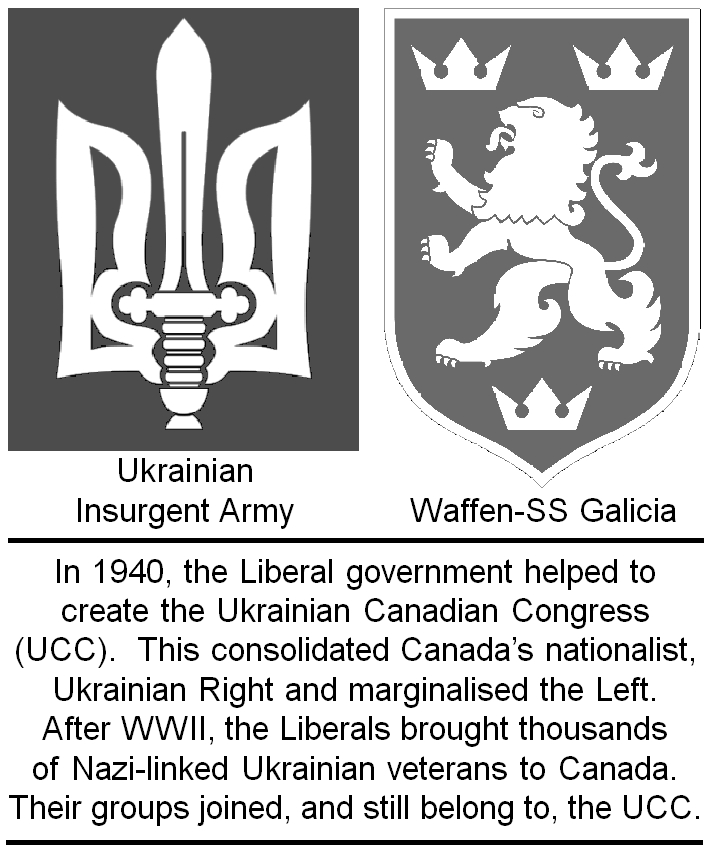 Nazi SS Veterans come to Canada
Nazi SS Veterans come to Canada
